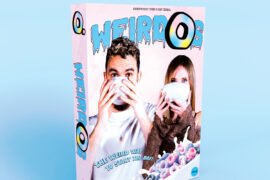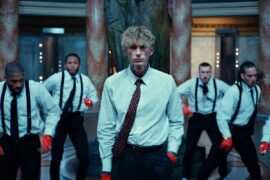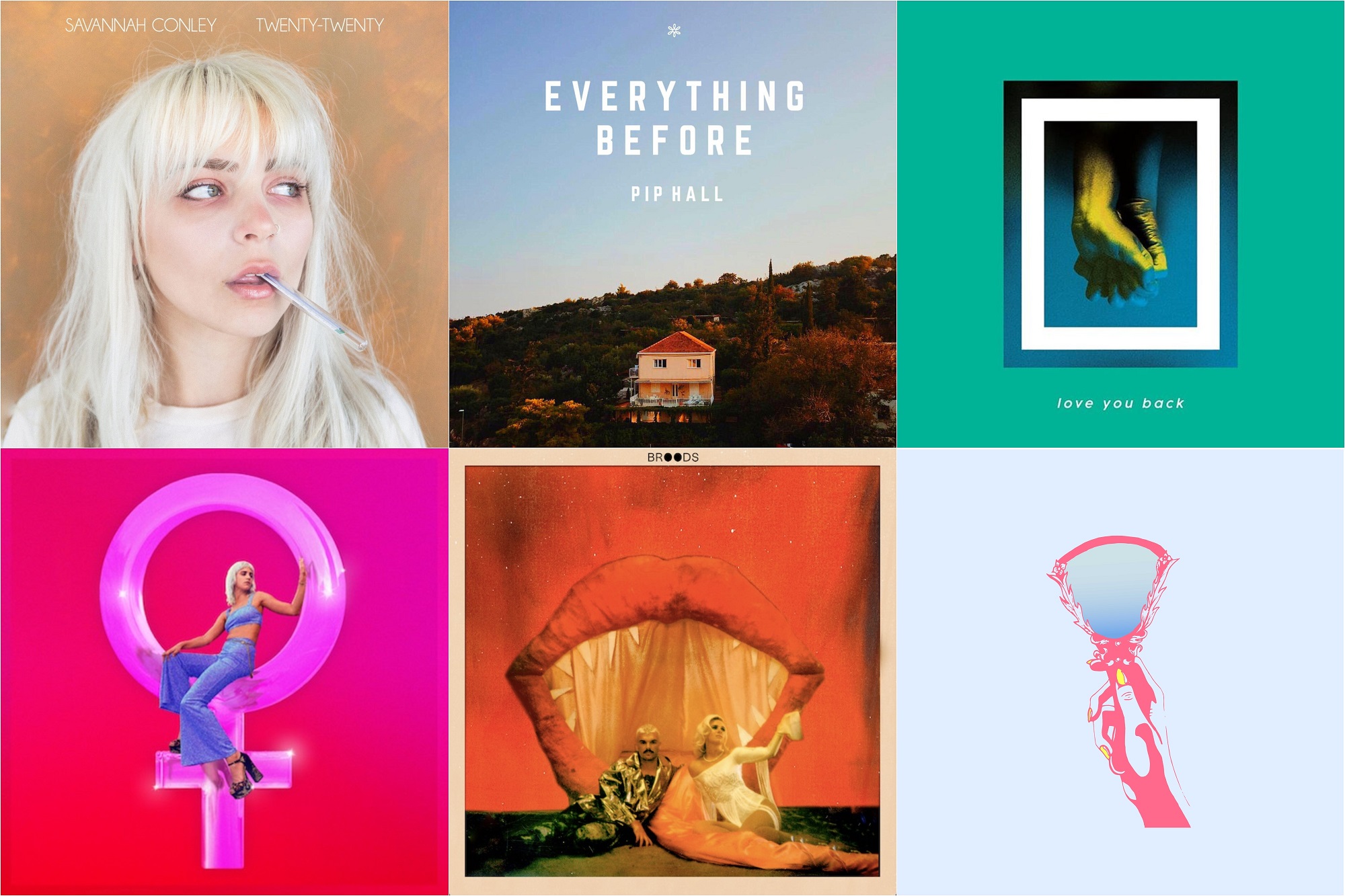Experimental artist SPELLLING has created a mystical and dynamic world on her new record The Turning Wheel.
Stream: ‘The Turning Wheel’ – SPELLLING
Music is my magic practice.
SPELLLING can see the future. And through the gauzy whirl of her new record The Turning Wheel (out June 25, 2021 via Sacred Bones), so can you. Chrystia Cabral’s third album is a veritable carnival of sound and color, a Lynchian court jester show draped in jewel tones and Gothic curtains — with Cabral as the winking ringleader of it all. SPELLLING’s first two records, Pantheon of Me and Mazy Fly, are haunting and hypnotic, her voice often drenched in reverb and with mostly minimal instrumentation. The Turning Wheel, by comparison, is a bright burst of clarity. For the first time, Cabral made demos of the songs for her record, because she intended to have full orchestration accompanying each track. The album was delayed, but the outcome of Cabral’s long months of arranging, orchestrating, recording, and producing 31 different musicians is an astounding piece of music.

The Turning Wheel is, like its name suggests, is a meditation on cycles — karmic, cosmic, time, life — and split into two distinct halves. The first half, titled Above, sounds like a musical set inside a crystal ball. Though Cabral typically sidesteps traditional genre, the Above portion of the album is like an impressionist painting of various vintage sounds — the opening track, “Little Deer,” is meant to have a Jackson 5 vibe, while standout track “Always” is reminiscent of a 1950s prom, though perhaps somewhat warped around the edges. “Awaken” and “Emperor with an Egg” are intensely orchestrated numbers, the latter of which almost serves as the entr’acte between halves.
On the album’s second half, Below, SPELLLING’s more familiar sound returns — dark, dreamy synths and drum machines populate the songs, but are made even more enticing by the continued orchestration. Below is the Gothic freak show, the darkly curtained carnival. The first track of Below, “Boys at School,” begins with a piano and strings overture — you can almost see the big top rise, the red velvet being pulled aside — before landing in a bed of moody alt-R&B. There’s the new wave-adjacent “Queen of Wands,” whose central question is, “Are you afraid of the power?” and the tumbling “Revolution,” turning over itself into a question of what completion feels like.
Throughout it all, Cabral’s gorgeous alto swoons and sighs. She evokes power and vulnerability, dreams of the future, and creates a mythical world to find solace in. It’s a record of duality and of wholeness, of fear and wonder. The record is one of the year’s best. Atwood spoke with Cabral about the The Turning Wheel, Buffy Sainte-Marie, Aleister Crowley’s tarot deck, and Gothic literature.
— —
:: stream/purchase The Turning Wheel here ::

A CONVERSATION WITH SPELLLING
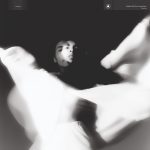
Atwood Magazine: This album was delayed a couple of times due to COVID, but it allowed you to rework much of The Turning Wheel, including the instrumentation. Can you talk about that process and the effect it had on the final outcome?
SPELLLING: I was graduating from UC Berkeley’s MFA program in art in 2019, and I was needing to do a thesis project to conclude my time there. I was starting to finally wrap my mind around making something new and I wanted to make a performance for my thesis project. So I started to write new material and a lot of the Turning Wheel songs came from that. They were really bare at that stage, just on my synth. I did them live and had some performance art that went with the music. After that, I really honed in on making demos. I knew for the first time that I would need to make demos, because in the past, I just hit record and kept whatever came out. But for Turning Wheel, it was the first time I felt like I was legitimately seeing myself as a musician and seeing this as a career, so I wanted to be intentional.
I made these demos and showed my label and they’re like, “This is great.” And I’m like, “But use your imagination because I see them totally different than this.” I had this fantasy of making the songs in studio; I was romanticizing this 70s era of cutting records where everyone was doing it on the spot, but I ended up breaking it into chunks remotely because of the pandemic. I realized with my personality style, it was easier to orchestrate such a big thing by breaking it up into smaller pieces. This meant going into the studio with each player and replacing all the parts that I mapped out on my synth with real instruments. It was a very drawn out process and one of the hardest things I’ve ever done. But there were a lot of great surprises along the way and so many cool people that I met doing it.
This album is so theatrical, and seems like a strange carnival in many ways. I know tarot is important to you, and this album has a lot to do with the future and magic. How do these themes intertwine with your writing?
SPELLLING: It’s what I’ve always been drawn towards when I create. I think about the relationship between the three different projects that I’ve put out, Pantheon of Me, Mazy Fly, and now Turning Wheel, and they all share this same curiosity about the divine and incarnation, you know, what we do with our time here in our flesh as humans on this planet — what we make of it and what lies beyond. I can’t say what those questions come from. But I grew up in a Catholic church, and I think that was kind of my first exposure to these things and what I always fall back on — the rituals of growing up in a Catholic Church, like communion and the hymns and the prayers and the books were my first relationship to music, and also music as this act of magic in my eyes.
So to me, music is my magic practice. It’s what I do to put these questions out there. There are no answers, but I think each song is a way for me to have this archive of a phase of my life. That’s why I love making records. Turning Wheel encapsulates the questions about cycles of life, referencing the wheel of karma, wheel of fortune, tarot cards, and phrases like “as above, so below” and “what goes around comes around.” And not just karma, but I think questions like, as we move through the cycles of life, when does that ever stop? Or when do we transcend these revolutions in time? From the mundane to the cosmic — that’s the way I want to write songs, where it’s accessible to people to hear and think of one thing at the surface, but then there’s always a second meaning behind it where I’m going into the mythical realm.

You mentioned coming from an MFA program. Do you think there are pieces of art or writing that you feel cosmically connected to that come out in your own art?
SPELLLING: So before I did my MFA program, I studied literature at Berkeley. I [originally] applied as a philosophy major, and I stayed with it for two semesters. During that time, I was hating it, just because of how isolated I felt in the department. I think I was the only person of color in all of my classes, and the only femme person, so it was really isolating. I felt like I was kind of shamed out of the department, to be honest. But I learned a lot there. The reason I applied is what I was mentioning earlier, my intrigue with the poetry of thought. I think of philosophy as an art, also. But after that, it made sense for me to transfer to English literature. I had this class with a professor named Nadia Ellis who exposed me to a lot of the reading that I think propelled me towards writing poetry for myself and turning into a writer.
I had read Beloved before in high school, but when I read it in college with the guidance of Nadia Ellis, I was totally mesmerized by Toni Morrison. I think that’s because it’s a Gothic novel. It’s dealing with history in a way that’s so cathartic that it allows you to kind of feel like you’re changing history as you read it. I was completely just obsessed with that book and realized that I really love Gothic literature. I love Frankenstein. I love Dracula. I’m a sucker for this combination of horror and wonder. So when people say that about my music, I think it’s a compliment. I think that realm was on my mind [for The Turning Wheel]. Also as a person of color, making goth music or making music in this realm is empowering. I’m glad to be a figure for the sort of kid who was interested in weird things like I was but didn’t have anyone to look up to, like, “Oh, this person’s doing it.”
There is such a tangible aesthetic to both the “Above” and “Below” halves of this record, the “Below” being the more Gothic sound and “Above” being...the way I’ve been describing it to people is like a Lynchian court jester show. There’s not really any “genre” to point to on either half.
SPELLLING: Totally. I love that description. As I was writing, I noticed that the songs that came naturally were the Below side of the album. Those tracks were just more on brand with what I’d made before with, and it really came down to access, like having my synth. When I made Pantheon and Mazy Fly, I just had a synth. I didn’t even have Pro Tools. I had Fruity Loops Studio, like a free trial [laughs]. So then I got Pro Tools, and as these new tools came in, I felt empowered to expand my sound. As for the Above songs, a lot of those were me thinking that I was going to write songs for other people. Lately, I’ve been wanting to build a portfolio of songs for cinema. I don’t know who I was imagining the songs were for or what I was making them about, but it felt like a way to take the pressure off of writing for SPELLLING. I think that’s why the Above songs came out in a unique way. Then I got attached, and I just went with it.
The Above and Below concept started to really make sense as a way to connect the different moods. Like you were saying, there is a jubilance and playful and adventurous energy to the Above and then the Below represents that more brooding, internal, darker element. Buffy Sainte-Marie helped me unlock that concept with her album, Little Wheel Spin and Spin. She did everything I’m trying to do with the album in one song. Like, drop the mic, here it is in one song [laughs]. It’s that concept of reality perpetually changing and the ephemera of time and being here and embracing it. She’s a Gothic artist — she’s an artist that just so wonderfully weaves the delicate with the painful and the beauty and the rawness of being alive. I really admire her and I was thinking about her a lot as I made this album.
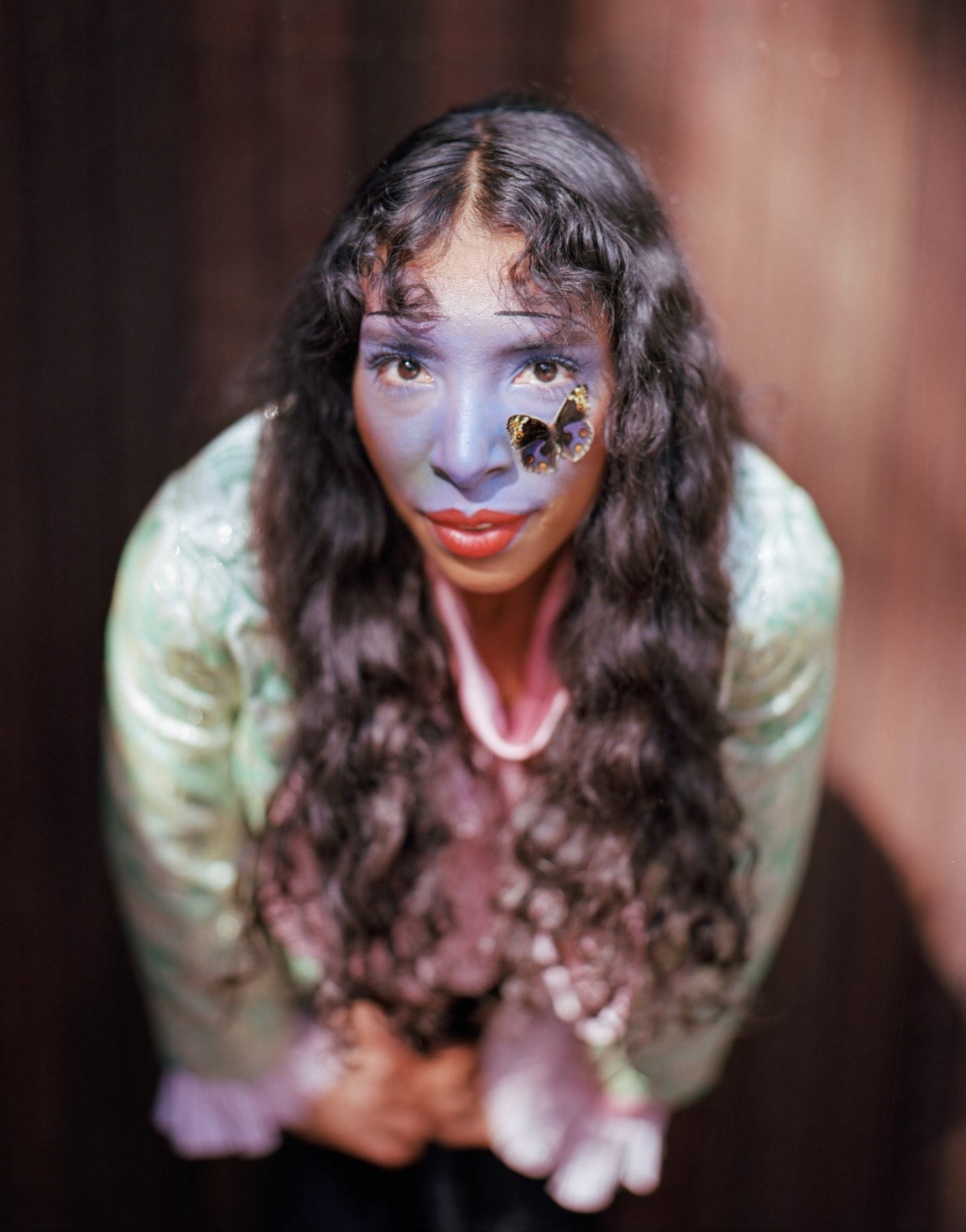
I’m so interested in the musical ekphrasis of “Little Deer,” which is inspired by Frida Kahlo’s “The Wounded Deer.” Can you talk about that connection?
SPELLLING: The process of each song is so mysterious and I treat it like a little adventure each time. For “Little Deer,” I can clearly remember walking my dog near UC Berkeley. I was walking up this block and I started to get the sort of idea for that intro melody. It reminded me of little footsteps, like an animal. And so this image of a deer started to come to mind. All I had was that intro and the idea of a deer. When that happens to me, I’ll go into research mode. I started to remember that painting “The Wounded Deer” (or “The Little Deer”) by Frida Kahlo and was like, “Oh, maybe I need to get obsessed with Frida Kahlo [laughs].” I mean, she’s already amazing and iconic, but I’m like, “Let me just see what this painting is all about.” So I was researching and found out the stuff that was on her mind and that stage of her life as she was making it. She was processing pain, mourning her body because she had gone through a serious injury, and was at this crossroads in her life where she was like “Is this my fate, now that pain is just a recurring part of my life?” The way that she painted herself, it’s her face on this deer on the forest floor, and there’s so much symbolism incorporated into it. There’s like a deer struck with nine arrows. Then on the left side, there’s nine trees, and “karma” written on the bottom.
It parallels certain things in tarot, like that nine is the crisis number and it represents reaching the end of the cycle, and also death and processing that death is what makes life meaningful. The song started to become about my relationship with processing cruelty and suffering, and understanding that those things exist in the world and that you share your life with these elements. I wrote it from the perspective of hunting a deer and coming face to face with this really pure and innocent being. But also the mood of the song is very Jackson 5 sort of soul. I wanted to play up the young Michael Jackson voice. Like I said before, it’s this double layer where it’s a playful song, but it’s also me thinking about those bigger ideas of suffering and cruelty and death as this dance that you are in play with your entire time in this world.
Did any tarot spreads in particular guide any of this album?
SPELLLING: I had the Aleister Crowley deck, and as I started to look through it, I thought, “Oh my God, why did it take me so long to get interested in this?” It was great timing to be studying it as I was writing The Turning Wheel. I’m the type of personality that rejects a lot of things because I know when I do actually get interested in it, I’ll get such tunnel vision that it’ll be like the only thing I do. Once I got into [tarot], I was studying every day, pulling cards and using them to write lyrics. I can think about a specific tarot card that helped me through each song on the album. There’s more obvious ones like “Queen of Wands,” where I drew the Queen of Wands from the Crowley deck and loved the art. It’s this orange card and the Queen has a wand that she’s pointing down that looks like a lightning bolt. And there’s a cheetah next to her. To me, it charged this idea of power and what is my relationship to power. She’s looking at you in the eyes and she is this force of power in its raw state. How do you interact with power? That is something that everybody’s faced with in some capacity. I think that song is about confronting how you relate to power in yourself and in the world. All the songs kind of had that. With “Legacy,” I drew the Three of Swords and in the Crowley deck, it’s called Sorrow. That helped me generate that lyric, “I draw my sword from the sorrow.”
What does the idea of “revolution” mean for this record?
SPELLLING: For the song “Revolution,” I drew the Four of Wands. It’s drawn as a circle of fire, and it’s called “Completion.” I remember feeling like that was another sign. It’s so gratifying when you lay out an intention. I remember right around that time, I was thinking of that Buffy Sainte-Marie song, “Little Wheel Spin and Spin”, and writing the song “Revolution,” which also is very layered. It’s literally about cycles, and I’m singing as a person looking back on their life — all these birthday candles, all of these years around the sun. It is this narrative of growing up and falling complicit to the predatory aspect of being on Earth where you’re exploited for your work and your labor, while wanting to resist that and reignite this attitude of being young and still having your dreams.
What do you hope listeners receive from The Turning Wheel?
SPELLLING: I hope that when people listen, it gives them space to retreat into a different dimension and be totally immersed. That’s the way that I laid it out, so you can listen to it from beginning to end and go through this arc and feel those contexts and feel like you’re hearing the references and the relationships between the songs. The design of an album is so intentional to me. I hope people can take that away, because I think it’s more rare these days. A lot of artists put out singles, which is awesome, too. But to make a complete record is like something that I really cherish because it’s comforting to me to listen through an album front to back and spend actual time in it.
— — — —

Connect to SPELLLING on
Facebook, Instagram
Discover new music on Atwood Magazine
? © Simrah Farrukh
:: Stream SPELLLING ::


